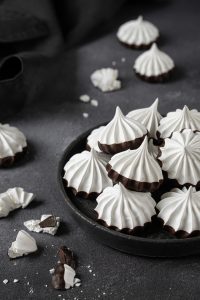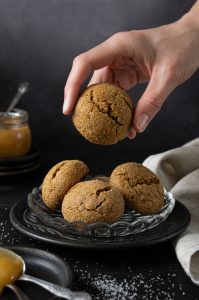There are always at least a few different ways to get the same result. But is it truly the same? I’ve tried four different batter mixing methods for the same cake recipe to see what difference only the mixing technique makes.
Different batter mixing methods are usually used for different types of cakes. For example, foaming is used for sponge cakes that are made with a lot of eggs, and creaming is a common method for butter cakes, which includes more fat than sponge cakes. But it’s not possible to reliably compare different techniques in different cakes (well, because everything is different) and why not break the rules for a change? It might lead to some knowledge.
Recipe
I chose an old-fashioned pound cake recipe for this experiment, which calls for equal amounts of all the main ingredients. I baked every cake in the same 10 cm / 4-inch baking pan, at 180°C / 350°F temperature for ~35 min. The exact ingredients I used:
- 1 medium egg (~50 g / ~1.76 oz)
- 50 g / 1.76 oz sugar
- 50 g / 1.76 oz flour
- 50 g / 1.76 oz unsalted butter
- 1,5 g / 0.05 oz (~0,5 tsp) baking powder

Mixing Methods
Foaming method
The main point of this method is to whisk eggs with sugar very well, to beat in as much air as possible. These air bubbles expand in the oven and raise the cake. Flour is mixed in the end to decrease gluten formation and it is done carefully, to destroy as few air bubbles as possible.
How I mixed
I beat a room-temperature egg with sugar for ~5 mins till it tripled in size and got very fluffy. Next, I added melted butter and beat some more till everything was well combined. Sifted in flour with baking powder and mixed the batter carefully by hand just until combined.
Creaming method
This method begins by beating soft butter with sugar. Sugar crystals create tiny air pockets that expand in the oven and raise the cake. Flour is mixed in by hand at the end to decrease gluten formation.
How I mixed
I beat room-temperature butter with sugar till butter got very pale and fluffy. Cracked in room-temperature egg and beat until well combined. Sifted in flour with baking powder and mixed the batter by hand just until combined.
Reverse creaming method
This method is reversed because flour is added at the beginning, but it’s mixed with butter before adding eggs. Gluten starts forming when flour contacts with water (e.g. in eggs), but this process is slowed down when flour is coated with fat before adding wet ingredients. This trick allows beating the batter longer at the end to incorporate as much air as possible.
How I mixed
I mixed flour, baking powder, and sugar. Added room-temperature butter and mixed till no dry flour was left. Cracked in a room-temperature egg and beat until everything was combined and the batter got light and fluffy.
No-beating method
I don’t think this kind of method or its name officially exists, but I’ve seen people teaching to make sponge cakes this way on the internet (I know, the internet is a weird place). But honestly, does all that beating is truly necessary if we add baking powder anyway? Why not skip it for once and see what we get.
How I mixed
I melted butter, added sugar, mixed by hand. Cracked in a room-temperature egg, mixed by hand. Sifted in flour with baking powder and mixed the batter by hand just until combined.
Outcome
Foaming method
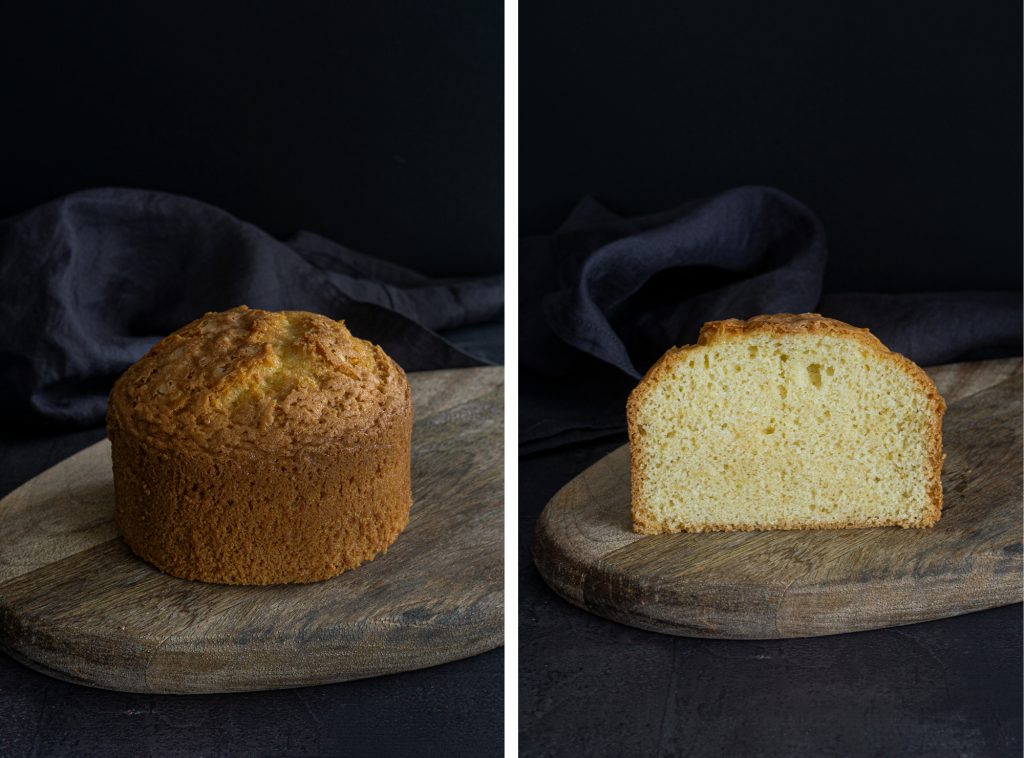
Batter. Large in volume and fluffy. Liquidy enough to pour it into the pan.
Rise. This cake rose the highest of all, slightly domed, but evenly and beautifully.
Color. Light, almost white.
Texture and taste. Light, fluffy and airy cake with melt in your mouth feeling.
Creaming method
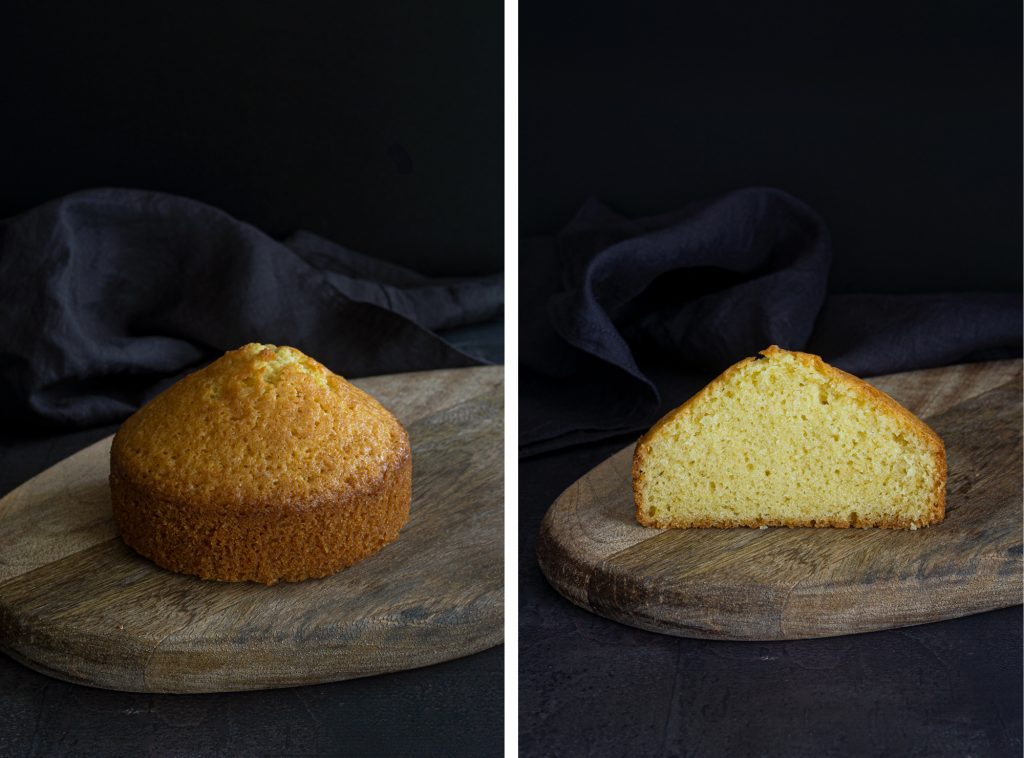
Batter. Fluffy but thick, I had to spoon it into the pan and level the top.
Rise. Did not rise very much, all the rise was domed.
Color. The most yellowish of all.
Texture and taste. Even if the rise was not high, the crumb was even with a pleasant texture. Very buttery taste, slightly crusty top.
I have a feeling that I did not manage to cream the butter well enough. It’s pretty hard to cream such a small amount, so it got light in color and fluffy but did not double in size, as I believe it should. But.. If something is difficult to achieve and is not applicable for small batches, it falls into my least favorite category.
Reverse creaming method
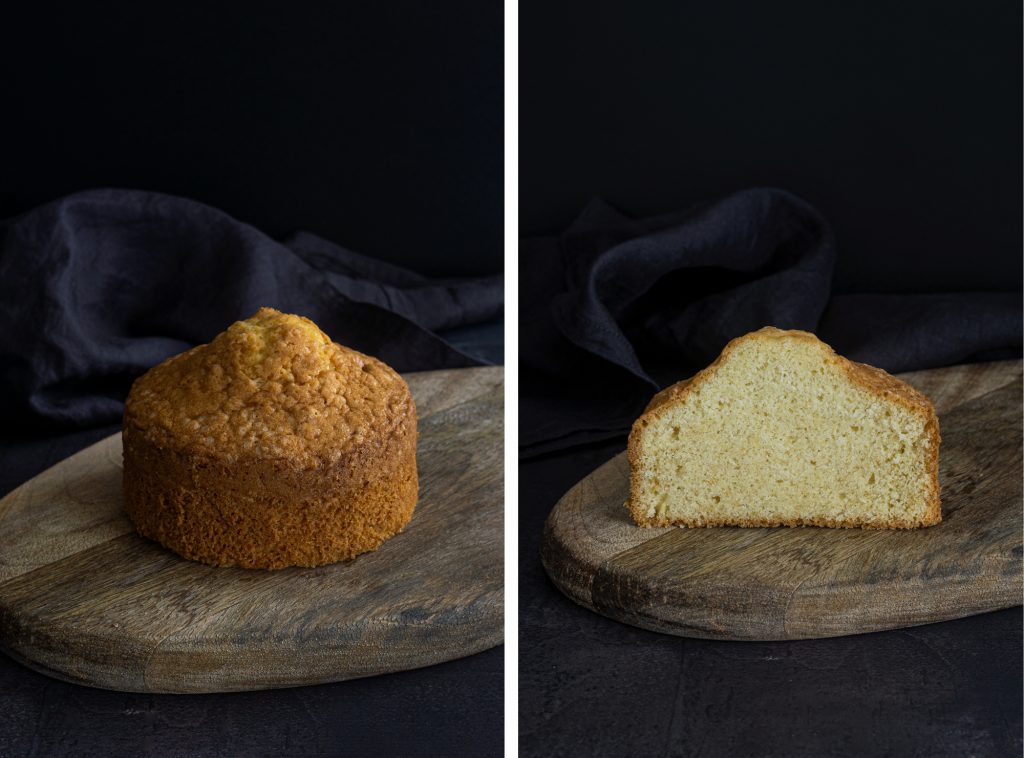
Batter. Thick but fluffier than the one made with the traditional creaming method. I still had to spoon it into the pan.
Rise. Rose almost as much as foamed cake, but the top domed more unevenly.
Color. The whitest cake of all.
Texture and taste. Light and fluffy cake with melt in your mouth feeling. It had smaller air pockets and a bit more even texture than the foamed cake, but both cakes tasted the same.
No-beating method
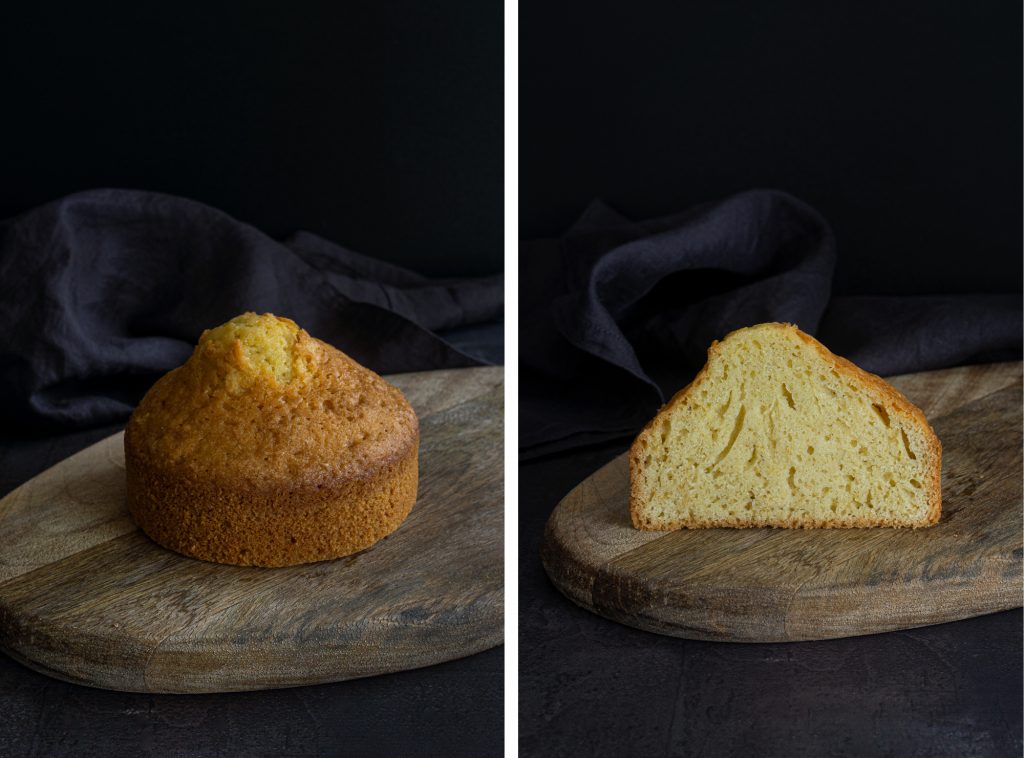
Batter. Even and liquidy, easy to pour into the pan.
Rise. Rose even more than the creamed cake but very unevenly and domed a lot.
Color. Yellowish.
Texture and taste. Even if it rose quite a lot, the texture was dense. Uneven vertical air pockets were clearly visible. Dry taste with stuck in your mouth feeling.

1 – foaming, 2 – creaming, 3 – reverse creaming, 4 – no-beating
Conclusion
- The winner mixing method – foaming. It creates the tallest, most evenly risen cake with a pleasant texture. Even when used for a pound cake! I would definitely choose this method when making cake layers.
- The second place – reverse creaming method. It produces as tasty cake as foaming, but the rise is not so even.
- As I’ve already mentioned, the creaming method falls to my least favorite category, simply because it’s easy to fail. I would choose the reverse creaming method for butter cakes because it’s a lot more simple and more reliable no matter the batch size.
- Sadly for all lazybones, beating is a necessary step in making cake batter and baking powder could not replace it by any means. So spend that extra few minutes to make sure your cake is light, fluffy, and tasty!


